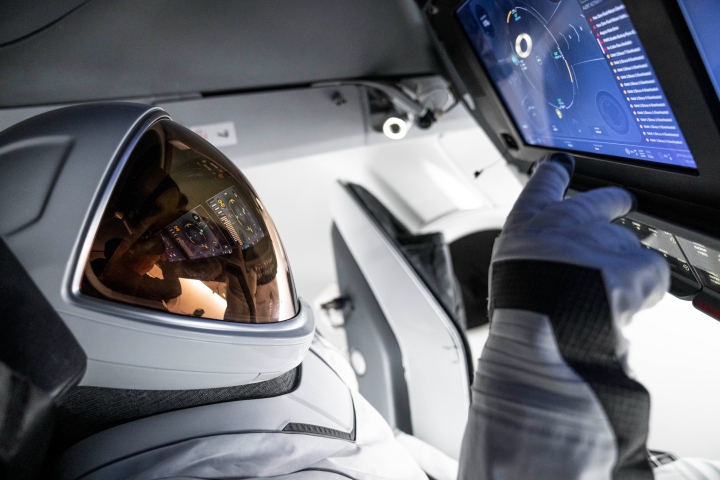Dartmouth researchers have a project aboard the Polaris Dawn mission they hope will help address two major health risks of space flight—the breakdown of astronauts’ bones in zero-gravity conditions and the resulting danger of developing kidney stones.
When subjected to weightlessness, bones freed from the burden of supporting the human body leach calcium. The shedding of this critical element reduces bone density and, as the calcium enters the urine, heightens the chance of painful kidney stones forming in the urinary tract.
Through Polaris Dawn, which launched from Florida on Sept. 10, researchers at Dartmouth’s Geisel School of Medicine and Thayer School of Engineering are testing a critical element of a handheld device the team is developing that would alert crew members to high levels of calcium in their urine during space flight so they can take action.
“If you’re in space for a long time, bone and muscle loss are significant problems. Right now, there’s not a really good way to track that in flight,” says lead researcher Jay Buckey, a former astronaut who is now a professor of medicine and director of the Space Medicine Innovations Lab.
“Our goal is to provide a simple real-time method for preventing kidney stones and bone loss in space,” says Buckey, who was aboard Space Shuttle Columbia’s STS-90 mission in 1998 and is also an adjunct professor at Thayer.
The team has developed a prototype of the device—which is not on the mission—that consists of a reader and a small-volume, small-mass sampler that detects the presence of calcium in urine using the fluorescent dye calcein. It was developed in partnership with Creare LLC, an engineering firm based in Hanover that was founded by the late Thayer professor Robert C. Dean Jr.

The project aboard Polaris Dawn is testing whether the day’s first urination—or first morning void—provides enough information on urinary calcium concentration for astronauts to gauge the risk of losing bone density and forming kidney stones.
“To have that real-time data would be invaluable for astronauts’ health,” says Mimi Lan, a PhD candidate in engineering who is leading the testing and evaluation of the handheld device. “We need good solutions to keep people healthy in space, especially if they don’t have room to exercise to maintain their bone and muscle mass.”
Currently, astronauts at risk for kidney stones provide all of their urine over a 24-hour period. But Buckey’s research suggests that one sample may do. A clinical study he led in 2022 found that calcium content was highest in the first morning void. The paper concluded that collecting those samples over several days should provide enough data to monitor calcium levels effectively.
“It should be relatively easy for a crew member to sample one void, get information from it, and put that information to practical use,” Buckey says.

The four members of the Polaris Dawn crew provided morning void samples on three consecutive days during the quarantine week before launch. The crew will also provide a morning sample on their last day in space.
After collecting the samples, the Dartmouth team will have them analyzed for kidney stone risk using a test panel that includes calcium. The samples also will be tested for fragments of the protein titin, which indicates possible muscle wasting and atrophy, another hazard of weightlessness.
A significant change between the pre-mission and last-day samples would indicate the researchers are on the right track in basing their device on the first morning void, Buckey says.
“We’re not the first to measure urinary calcium in space,” Buckey says. “But focusing on the first morning void is unique. This mission is the first real test of our idea in space.”

